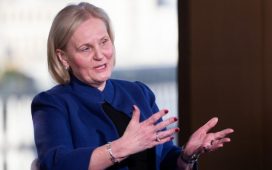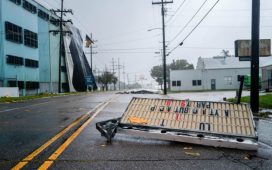The insurance industry must resist the temptation to “give up the game” and retreat from areas blighted by extreme weather in a move that would leave governments to foot the bill for disasters, according to one of the biggest risk modelling companies.
The increasing severity and frequency of storms, fires and floods in some parts of the world has led to some disaster-prone spots being labelled “uninsurable”, forcing governments to shoulder some of the financial burden that increasingly destructive weather has brought.
“The insurance industry has to step up . . . and play our role in devising an insurance system which works for those particular situations,” said Michael Steel, head of Moody’s RMS, which supplies models to help insurers gauge their potential losses from natural catastrophes.
“It’s too pessimistic to give up the game and say it is too difficult to insure [these areas],” said Steel. “It would be a really sad state of affairs if we actually all throw up our hands and say we are just going to leave it to the state to deal with.”
The assessment comes as the debate within the industry over how to provide insurance in parts of the world subject to extreme weather, including Florida, California and Australia, intensifies.
Governments have already intervened to share the financial risk of wild weather through schemes such as Australia’s cyclone reinsurance pool and the state-run insurers of last resort such as Florida’s Citizens.
Moody’s RMS, a subsidiary of New York-listed risk management group Moody’s, employs 1,300 people worldwide. It was founded in 1989 as a spinout from an insurer-funded project at Stanford University, the Insurance and Investment Risk Assessment System.
Steel highlighted the role of reinsurers, who share the financial hit with insurers and have suffered years of high losses from property catastrophe reinsurance. As a result, they have sought to cap their exposure, demanding higher prices and for insurers to retain more risk.
A combination of better analysis, new forms of loss prevention and higher prices should encourage reinsurers to take more risk, but it will take “a cycle to be able to prove that”, said Steel, who began his career as a reinsurance broker.
In recent years, natural catastrophe-related claims have consistently surpassed expectations, leading to criticism that the effect of climate change is being underestimated.
Insurers privately pin some of the blame on the models themselves, which have been widely adopted since Hurricane Andrew, a powerful category 5 Atlantic hurricane that struck the Bahamas, Florida and Louisiana in 1992 and wrought significant damage.
The predictive models, insurers said, are not keeping up with the acceleration in the frequency and severity of extreme weather caused by global warming.

Steel said he “broadly” rejected such criticism, saying the firm’s research found insurance losses that had overshot expectations were explained by factors such as outdated information on property values.
But the firm was “constantly learning”, he added, and had created a tool that allows insurers to view how their portfolio would be affected under different climate scenarios.
“It’s not as if we are sitting here saying we completely understand the impact that climate change is going to have . . . but we are best placed to be able to use the arsenal of tools that we’ve got . . . to be able to help the industry understand the impact of that,” he said.










